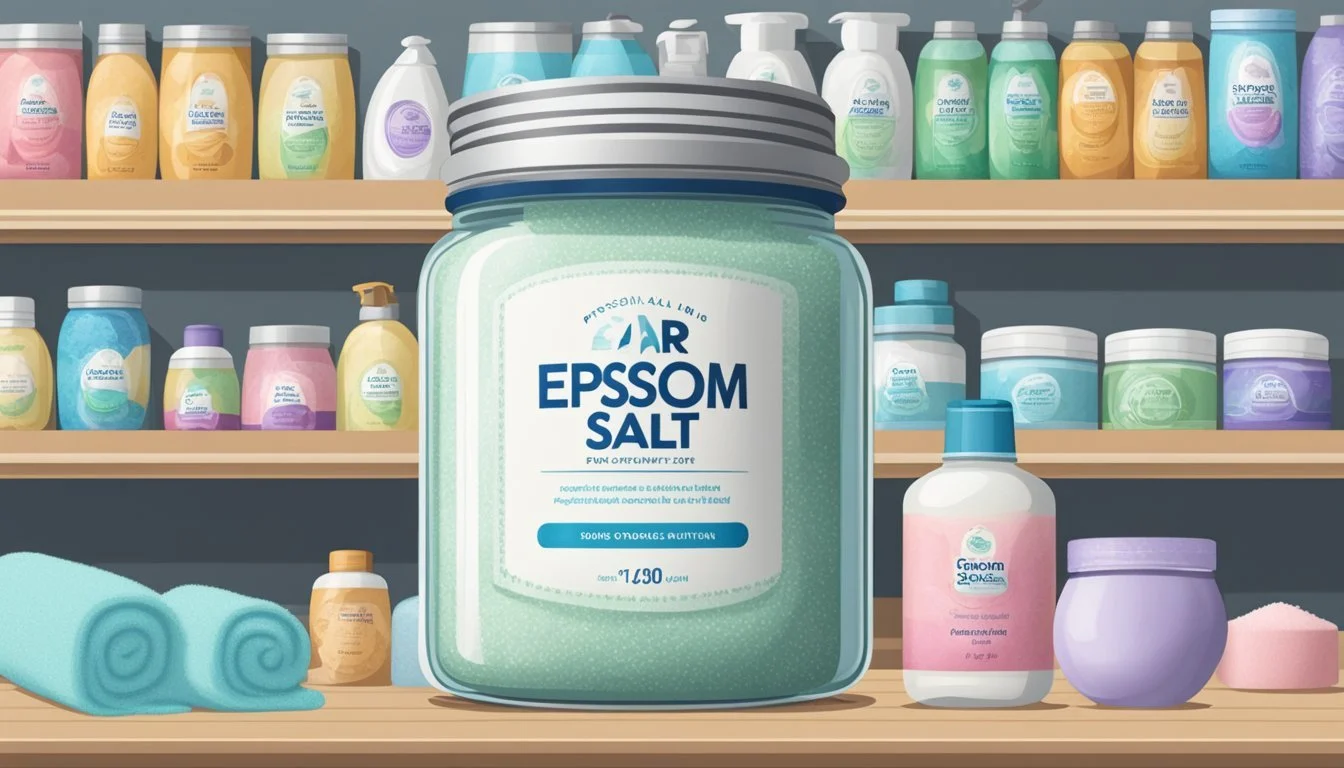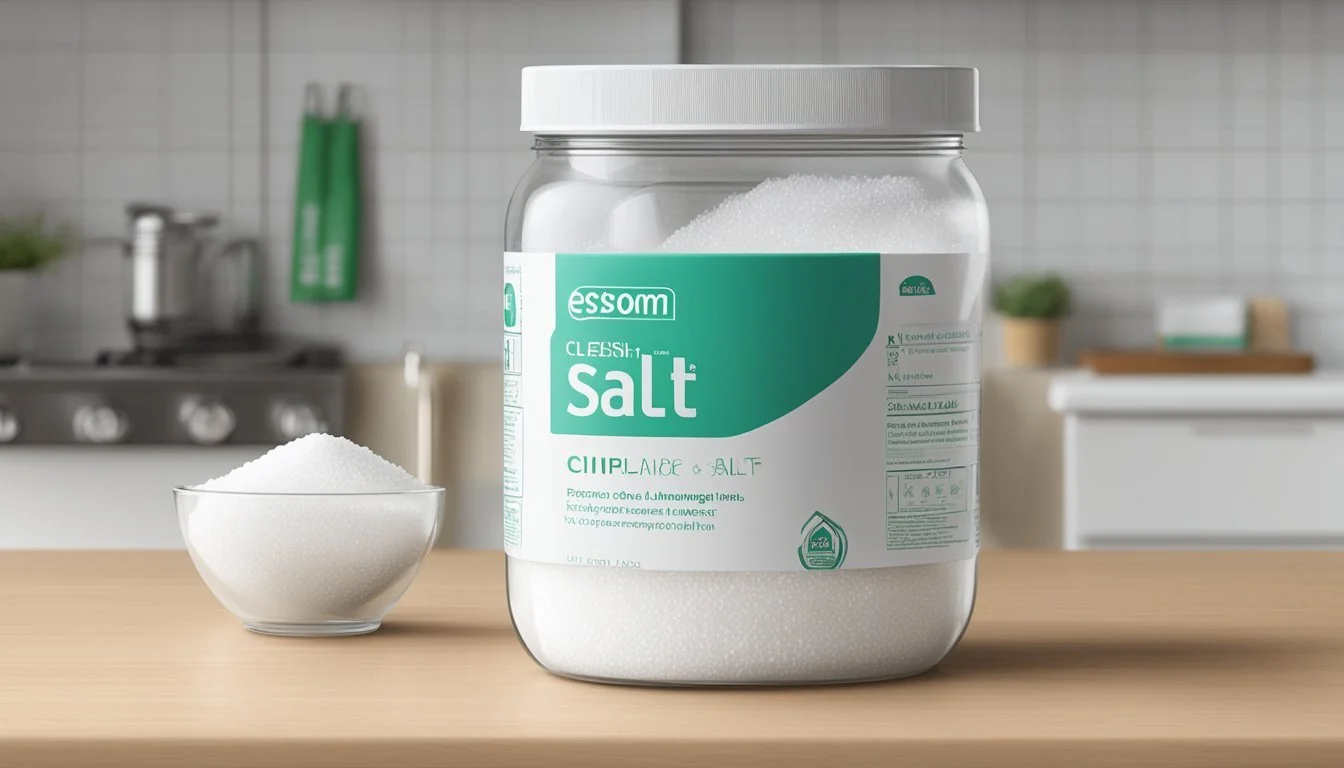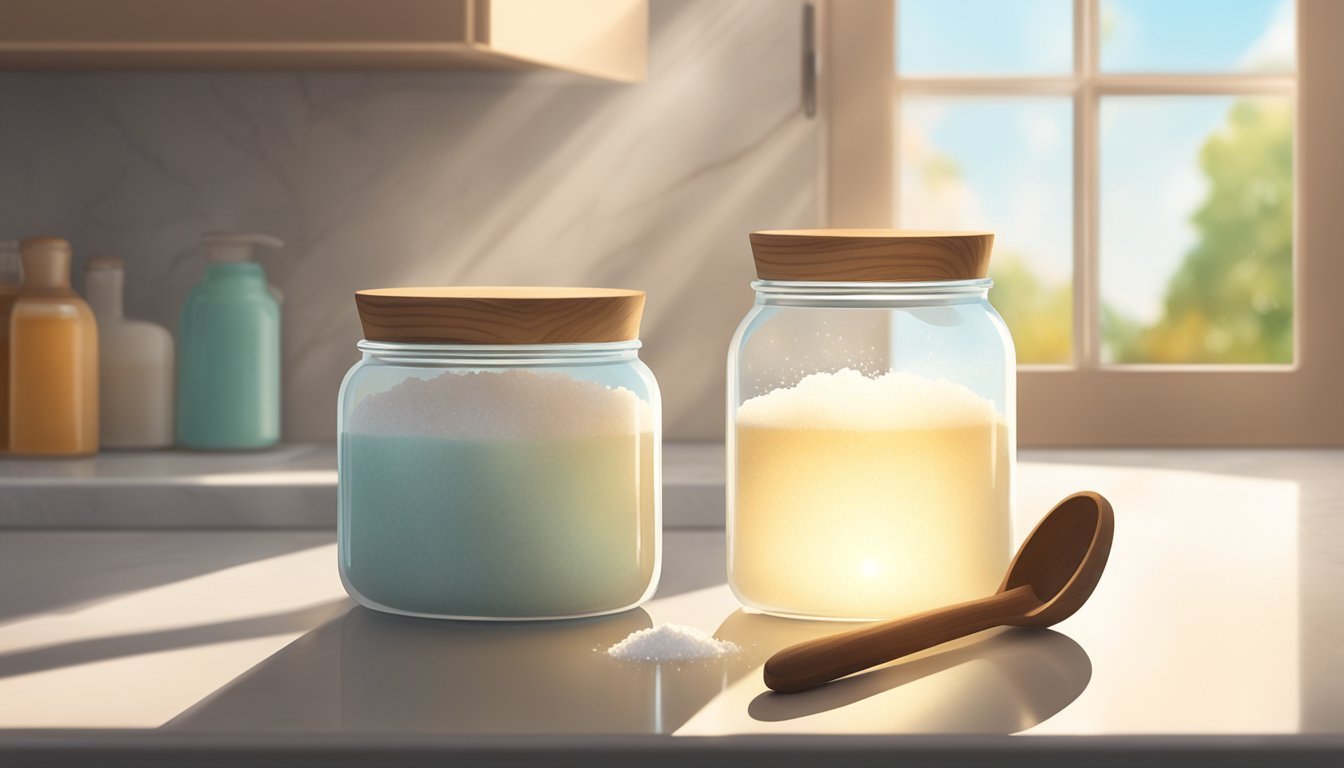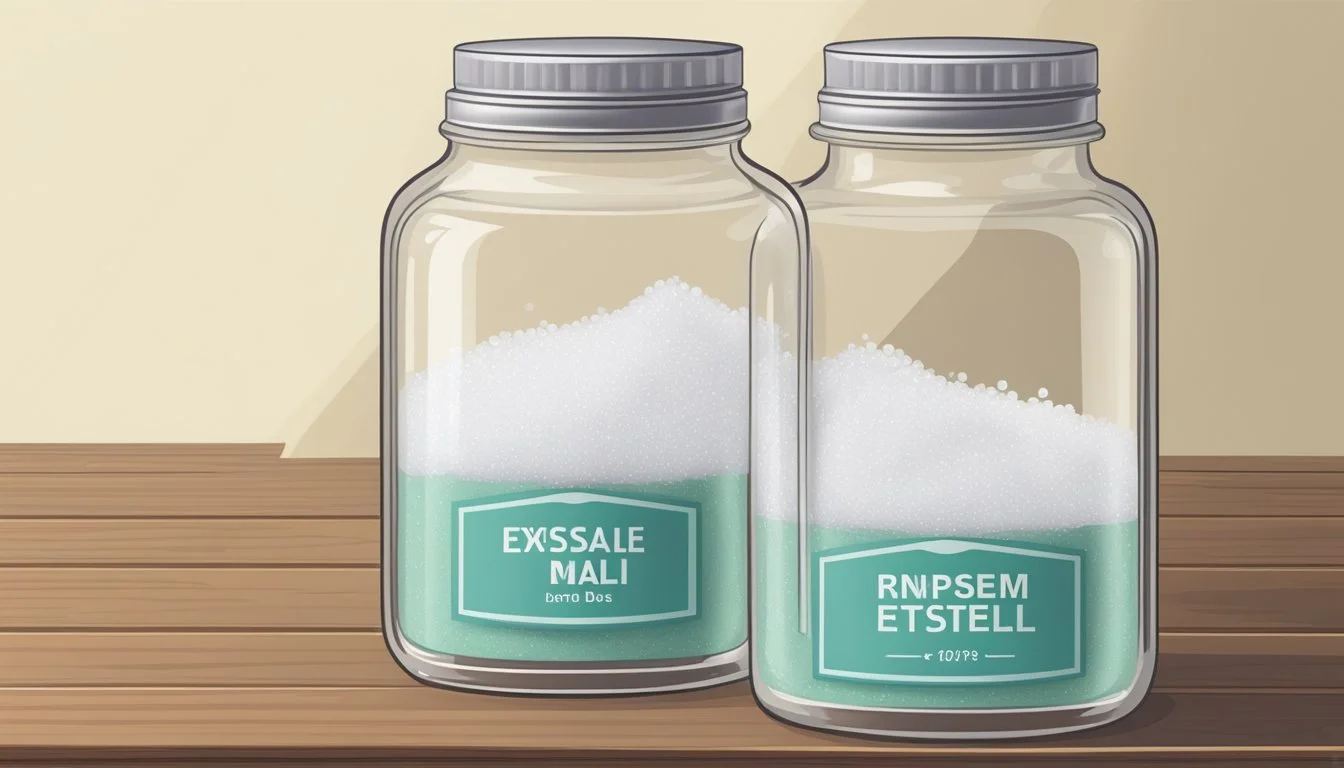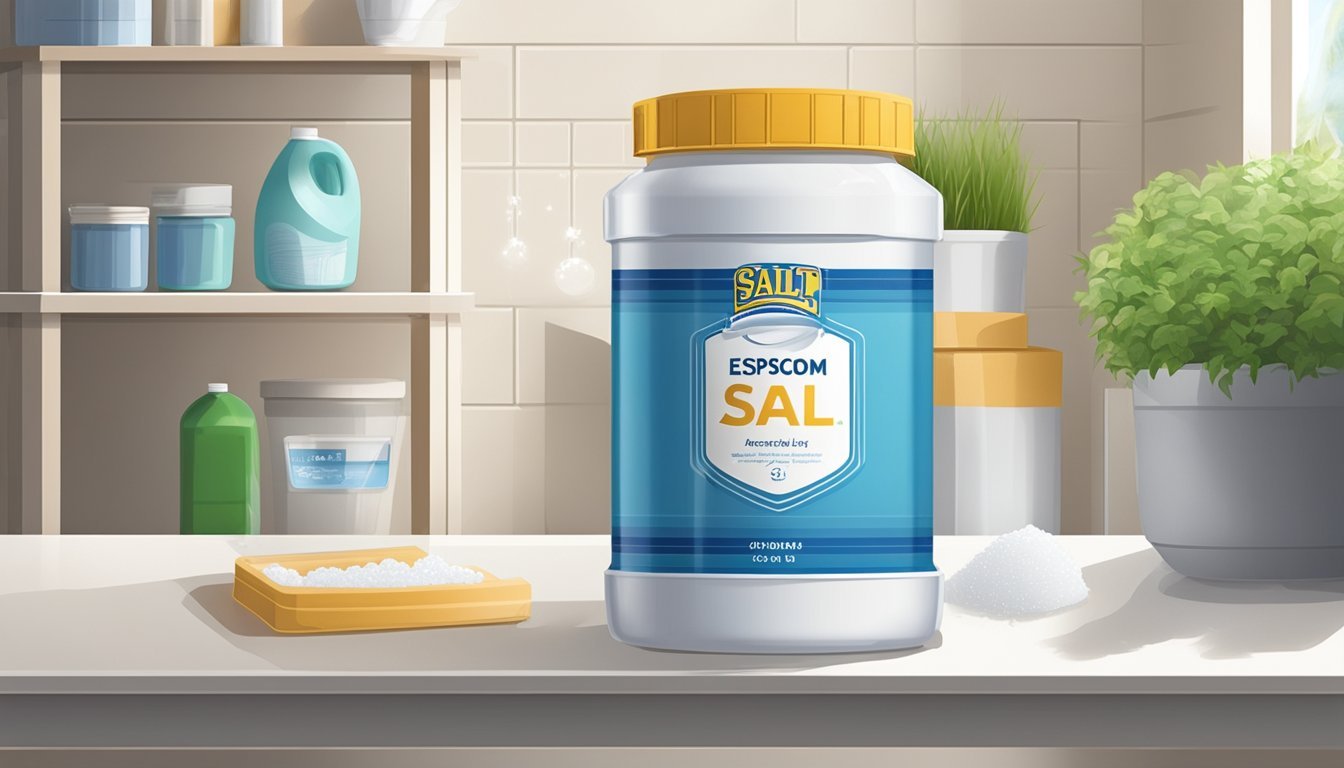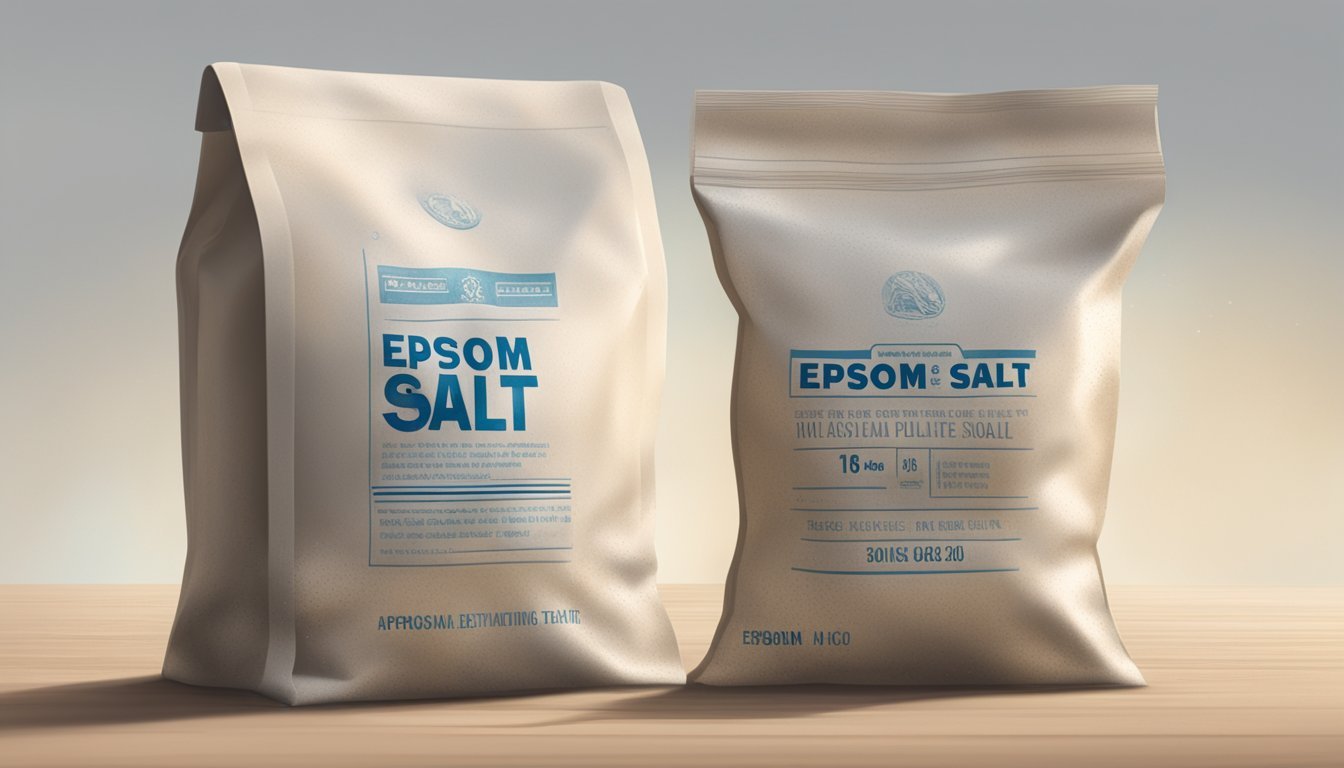How Long Does Epsom Salt Last?
Shelf Life and Storage Tips
Epsom salt (how long does epsom salt last?), a naturally occurring mineral compound composed of magnesium and sulfate, is known for its myriad uses in gardening, household cleaning, and personal health. Traditionally hailing from the spring waters of Epsom in Surrey, England, this substance has become a staple in medicine cabinets worldwide. Its chemical structure endows it with a long shelf life, as magnesium sulfate does not break down as quickly as some other compounds, which means Epsom salt often remains effective well beyond typical expiration dates of other products.
The shelf life of Epsom salt is notably lengthy when stored in proper conditions, such as a dry and airtight environment. Humidity and moisture are the main adversaries of Epsom salt, as they can lead to clumping and may degrade its quality over time. It is generally recognized that, when kept away from these elements, Epsom salt retains its efficacy for several years, often spanning two to three years at minimum from its production date.
It is reassuring to note that Epsom salt, being a stable mineral, does not foster the growth of bacteria or other potentially harmful microbes. As such, this lack of an expiration timeline doesn't suggest a compromise in safety when using the product beyond what might be suggested on packaging. Users can continue to rely on Epsom salt for its benefits, so long as the magnesium sulfate remains dry and uncontaminated.
What Is Epsom Salt?
Epsom salt is a naturally occurring mineral that is comprised of magnesium, sulfur, and oxygen. It is a chemical compound known as magnesium sulfate (MgSO4). Magnesium and sulfate are both essential nutrients that play a vital role in various bodily processes.
Chemical Composition:
Magnesium: A mineral involved in over 300 enzymatic reactions in the body.
Sulfate: A compound containing sulfur and oxygen atoms.
Discovered in the town of Epsom in Surrey, England, this mineral has been utilized for centuries due to its range of purported health benefits.
Forms of Epsom Salt:
Naturally Derived: Extracted from natural springs in specific geographical areas.
Manufactured: Commercially produced through chemical processes.
Epsom salt can be identified as small, colorless crystals that are similar in appearance to table salt, yet they have a distinctively bitter taste. It is crucial to differentiate between Epsom salt and table salt chemically, as they serve different functions and are not interchangeable.
Epsom salt is commonly dissolved in warm water to create therapeutic baths, offering relaxation and muscle soreness relief. The magnesium content in Epsom salt baths may be absorbed through the skin, potentially providing magnesium's associated benefits without oral supplementation.
Epsom Salt Uses and Benefits
Epsom salt, a compound consisting of magnesium and sulfate, stands out for its versatile uses and benefits ranging from relieving muscle pain to assisting plant growth. Its efficacy as a laxative, a source of stress relief, and an enhancer of sleep and relaxation makes it a valuable addition to both home and garden.
Medical and Therapeutic Benefits
Epsom salt is widely recognized for its role in alleviating muscle aches and reducing inflammation. When dissolved in warm water, it creates a solution that can soothe muscle pain, sunburn, and skin irritation. This therapeutic soak not only promotes stress reduction and relaxation but can also help to improve sleep. As a laxative, a moderate amount taken orally with water can provide quick relief from constipation and upset stomach.
Pain reliever: Helps to ease body aches and reduce soreness after exercise.
Stress management: Bathing in Epsom salt-infused water is believed to help in reducing physical and mental stress.
Skin treatment: May be useful in a compress to relieve skin conditions like toenail fungus.
Gardening and Agricultural Uses
In the garden, Epsom salt serves as a supplementary source of magnesium and sulfate, essential nutrients that support plant health. By adding it to soil or water, gardeners can enhance exercise performance in plants, leading to more robust growth and yield.
Lawn and plant growth booster: Provides vital nutrients to plants, improving vitality and growth.
Natural pesticide: Can be used to deter pests without the use of harsh chemicals.
Household Applications
Epsom salt's benefits extend to various household applications. A sprinkle of it can assist in cleaning tasks or act as a natural, chemical-free way to keep the home environment healthy.
Cleaning agent: Works as a gentle abrasive for cleaning tiles and grout.
First aid kit: A solution of Epsom salt and water can be used to cleanse minor wounds and aid in the healing process.
Understanding Epsom Salt Shelf Life
Epsom salt, a mineral compound consisting of magnesium and sulfate, is known for its versatile uses in wellness and gardening. The concern regarding its shelf life often revolves around two main aspects: potency and physical changes.
Expiration Date: Manufacturers may include an expiration date on Epsom salt packaging, which can serve as a guideline for optimal use. However, these dates are not mandated by the FDA, as Epsom salt does not fall under the category of food chemicals that require expiration dates under the Food Chemicals Codex.
Shelf Life: The innate properties of Epsom salt allow it to have an extensive shelf life. When stored properly—in a cool, dry, dark place—Epsom salt can maintain its quality for many years, often decades.
Physical Attributes Change: Over time, Epsom salt might become:
Lumpy: due to moisture absorption, leading to clumps.
Odor: While pure Epsom salt is typically odorless, if it develops an odor, this could indicate contamination.
Efficacy Considerations:
Efficacy: Though Epsom salt may not technically "expire," its efficacy can diminish, especially if exposed to moisture which can affect its solubility.
Following USP guidelines, it's critical to ensure that any use of Epsom salt, whether in food production or other applications, retains the intended quality. If there are any doubts regarding the condition of Epsom salt, especially changes in appearance or texture, replacing the product may be the safest option to maintain its intended efficacy.
Factors Affecting Epsom Salt Longevity
Epsom salt, also known as magnesium sulfate, has a stable chemical composition that contributes to its extended shelf life. However, certain environmental factors can compromise its effectiveness and longevity.
Moisture Exposure
Exposing Epsom salt to moisture is the primary factor that can reduce its shelf life. When Epsom salt comes into contact with humidity or water, it can clump and lose potency. To ensure longevity, it should be kept in an airtight container to minimize moisture exposure.
Storage Conditions
How Epsom salt is stored plays a significant role in maintaining its quality. Storage in a cool, dark place helps to protect it from temperature fluctuations and light, which can degrade its structure. Keeping it away from sources of heat and direct sunlight helps preserve its effectiveness.
Contamination Risks
Contamination from bacteria, microbes, or oxygen can affect the integrity of Epsom salt. An unsealed container not only allows moisture in but also permits contaminants that can lead to spoilage. Ensuring strict hygiene and the use of clean utensils can mitigate contamination risks.
Proper Storage of Epsom Salt
Storing Epsom salt appropriately is essential to maintain its quality over time. Ensuring the storage conditions are optimal can greatly extend its usability beyond the typical shelf life indicated on the packaging. Below are crucial points to consider for proper storage:
Container Choice: Epsom salt should be stored in an airtight container to prevent exposure to moisture. Moisture is the primary adversary of Epsom salt as it can lead to clumping and potentially decrease the salt's effectiveness.
Location: The storage area plays a significant role in preserving the salt's integrity. It is recommended to keep Epsom salt in a cool, dark place. Cabinets or pantries away from direct sunlight are ideal locations to prevent degradation of the salt.
Humidity Control: Keep Epsom salt away from high humidity areas. Bathrooms, despite being common places for Epsom salt use, are not suitable for long-term storage due to the fluctuating humidity levels.
Temperature Stability: A consistent temperature is beneficial for Epsom salt storage. Extreme temperature variations can affect the salt’s physical properties.
When questioning how to store Epsom salt effectively, consider the following tabulated summary:
Storage Aspect Suggested Method Container Airtight Environment Cool and dark Humidity Low, away from damp locations Temperature Consistent, avoiding extremes
By respecting these storage guidelines, users can ensure their Epsom salt maintains its quality for potentially many years, far exceeding the dates indicated by manufacturers.
Identifying Expired Epsom Salt
Epsom salt can lose its efficacy over time. To determine if a batch of Epsom salt has expired, one should check for changes in appearance, any detectable odors, and variations in texture.
Changes in Appearance
Epsom salt that has passed its optimal usability period may exhibit discoloration. Initially white, any change to a yellowish or other off-color hue suggests contamination or degradation.
Detection of Odor
Fresh Epsom salt should be odorless. The presence of an unpleasant odor is a strong indicator that the Epsom salt may no longer be suitable for use.
Texture Variations
The texture of Epsom salt should be granular and free-flowing. If the salt becomes lumpy or develops hard, solid masses, it has likely absorbed moisture, which can compromise its quality and effectiveness.
Safety and Side Effects
When considering the use of Epsom salt, it is crucial to understand its side effects and the circumstances under which it should not be used. Safety is paramount, and recognizing potential adverse reactions can ensure responsible utilization.
When Not To Use Epsom Salt
Epsom salt, primarily composed of magnesium sulfate, is generally safe for most users when applied in a bath or as a soak. However, individuals with kidney disease or those suffering from severe dehydration should avoid its use. The magnesium in Epsom salt can accumulate in the body if the kidneys are not functioning correctly, leading to complications.
The laxative effect of orally ingested Epsom salt is well documented, and thus, it should only be taken internally under medical supervision. Pregnant women, children, and people with gastrointestinal conditions, such as ulcers, should abstain from internal use unless guided by a healthcare professional. Prescription medications can also interact with Epsom salt, so a consultation with a healthcare provider is advised before use.
Recognizing Allergic Reactions
An allergic reaction to Epsom salt, although rare, can manifest as skin irritation or itching following its use. More severe allergic reactions might include:
Hives or welts on the skin
Redness or inflammation at the site of contact
Respiratory issues such as wheezing or difficulty breathing, which require immediate medical attention
Users should perform a patch test before full application to ensure there is no adverse reaction. If one suspects they are experiencing an allergic reaction to Epsom salt, it is imperative to discontinue use and seek medical advice.
Epsom Salt Versus Other Salts
Epsom salt is distinct in composition and use when compared to table salt and magnesium chloride. While Epsom salt primarily offers benefits for relaxation and health, table salt and magnesium chloride serve different purposes in both dietary and industrial applications.
Table Salt
Table salt, or sodium chloride (NaCl), is a mineral essential for human health, predominantly used for culinary purposes. In its pure form, it consists of about 40% sodium and 60% chloride by weight. Its key characteristics include:
Flavor: Enhances taste and is a staple in kitchens worldwide.
Preservation: Critical for food preservation methods.
Epsom salt, chemically known as magnesium sulfate (MgSO4), does not serve the same culinary or preservation functions as table salt. They differ in both chemical structure and practical applications.
Magnesium Chloride
Magnesium chloride (MgCl2), typically used as a magnesium supplement or a de-icing agent, shares the common mineral magnesium with Epsom salt. Its profile includes:
Hygroscopic properties: It readily absorbs water, making it effective for controlling dust and ice.
Supplement form: Available to address magnesium deficiency.
Both magnesium chloride and Epsom salt can be associated with health and well-being; however, Epsom salt is specifically known for its use in bath salts, providing a soothing effect and helping with minor aches. Epsom salt's benefits are achieved through its magnesium and sulfate components, differentiating it from the chloride component in magnesium chloride.
Epsom Salt in Gardening
Epsom salt is recognized in the gardening community for its potential benefits as a natural fertilizer and pest repellent. Derived from magnesium and sulfate, it is applied by some gardeners to enhance plant growth and fortify garden defense against pests.
As Fertilizer
Gardeners use Epsom salt as a supplemental fertilizer due to its rich magnesium content. This nutrient is essential for seed germination, chlorophyll production, and the strengthening of cell walls. When Epsom salt is used in gardening, it is typically dissolved in water and applied either as a soil drench or foliar spray. The general application guidelines are to mix approximately 2 tablespoons of Epsom salt per gallon of water for this purpose. Here is a brief outline for using Epsom salt as a fertilizer:
Seed Starting: A tablespoon per gallon of soil to boost seed germination
Transplanting: A tablespoon per hole to help root recovery
Maintenance: Monthly application as a foliar spray to promote photosynthesis
Pest Control
Epsom salt's use in pest control is attributed to its bitter taste and granular texture, which deter pests from eating or infesting plants. Some gardeners sprinkle a small amount of Epsom salt around the base of plants to create a barrier against slugs and snails. However, it should be noted that its efficacy as a pest deterrent is debated and should not replace comprehensive pest management strategies.
Application: Lightly dust around the stem base to discourage slugs and snails
Precaution: Avoid overapplication to prevent salt accumulation, which can be detrimental to plant health.
Epsom Salt for Beauty and Wellness
Epsom salt is widely recognized for its versatile use in beauty and wellness routines, offering benefits from relaxation to skin care.
Bath Soaks
Bathing in Epsom salt-infused water can help soothe muscles and promote a sense of relaxation. Bath soaks with Epsom salt typically involve adding 1 to 2 cups of the salt to a filled bathtub, enhancing the bath experience and aiding in the removal of dead skin cells.
Foot Care
For weary feet, Epsom salt plays a pivotal role in foot care. A foot soak can reduce odor, soothe aches, and soften rough skin when feet are submerged in a solution of Epsom salt and warm water, typically using a ratio of 1/2 cup salt per gallon of water.
Beauty Product Applications
Epsom salt serves as an ingredient in beauty products for exfoliation and skin smoothing. Its granular texture aids in the removal of dead skin cells when applied as a body scrub. Diluted in water, it may also serve as a facial cleanser for oily skin.
Recommendations and Tips
When considering the use of Epsom salt, whether as a magnesium supplement or for home remedies, it is vital to heed professional healthcare advice for recommended dosages and to understand its effects on bodily functions.
Doctor's Advice
Doctors typically suggest that while Epsom salt can be beneficial, its use should be within safe limits. When used as a soak, individuals should not exceed the recommended dosage to avoid altering blood magnesium levels. Concerns or specific conditions should lead one to consult a healthcare provider to understand the appropriate usage and to ensure it won't interfere with bodily functions or the efficacy of other medications.
Recommended Dosage for Soaks: Generally, 2 cups of Epsom salt for an adult in a standard-sized bathtub filled with warm water, soaking for at least 12 minutes.
Homemade Remedies
Epsom salt's versatility extends to various home remedies, particularly due to its magnesium content, which may assist in maintaining neurotransmitter functions. It's important that homemade remedies involving Epsom salt are used with caution, understanding the potential impact on one's health.
Magnesium Foot Soak: Add ½ cup of Epsom salt to a basin of warm water for a rejuvenating foot soak.
Muscle Soothing Bath: Mix 1 to 2 cups of Epsom salt into a warm bath to help soothe aching muscles.

